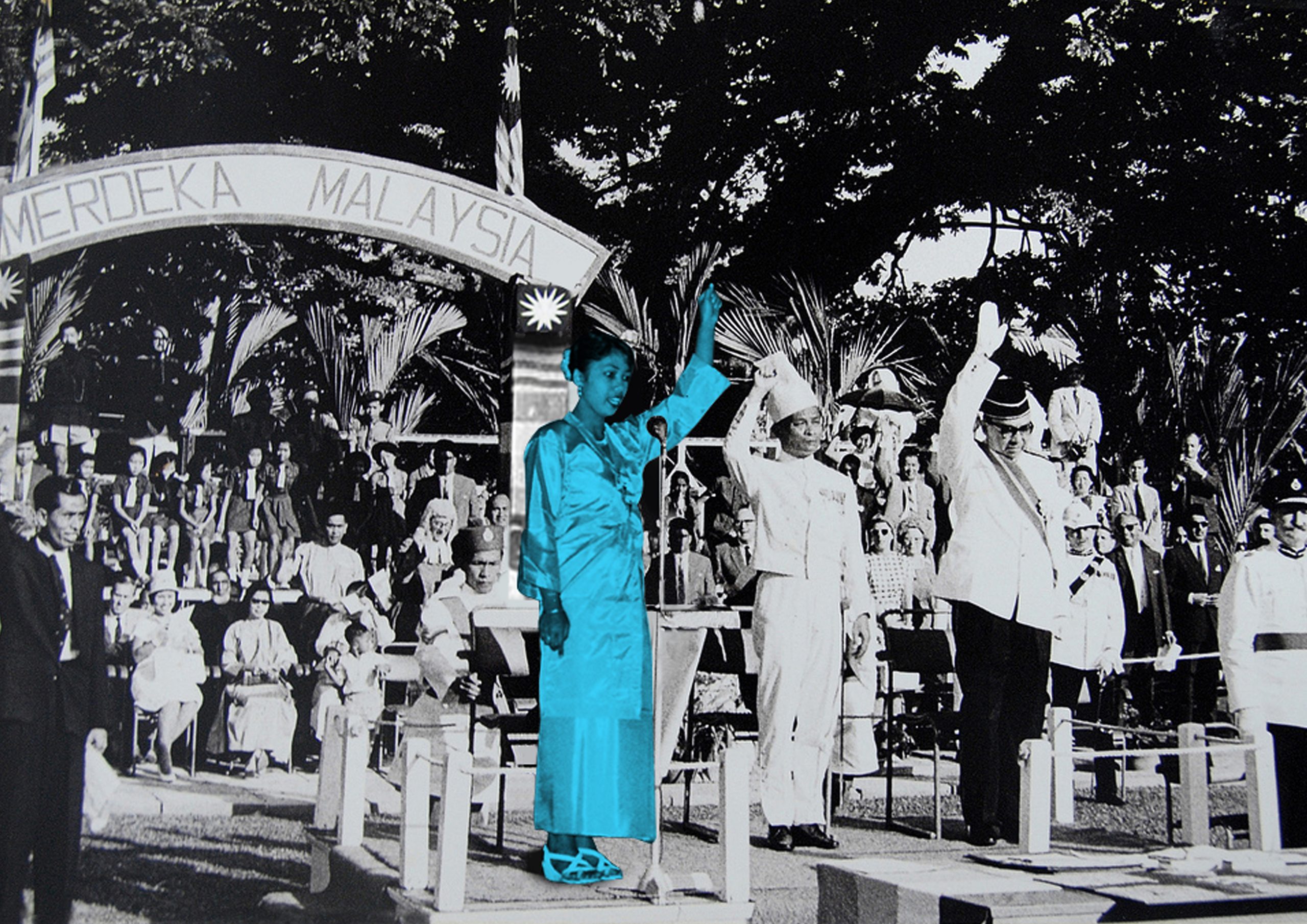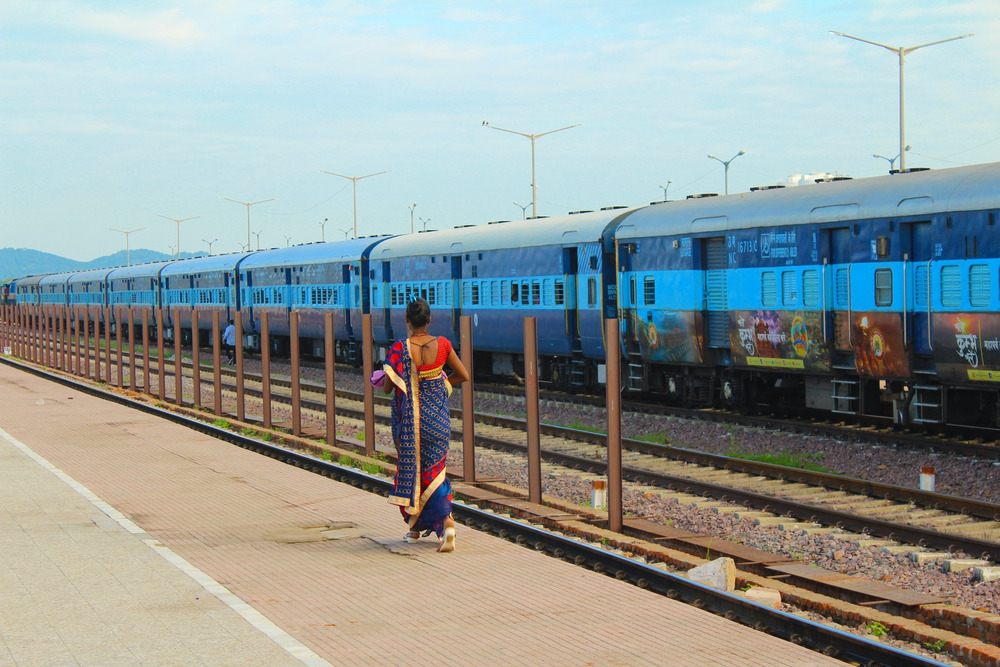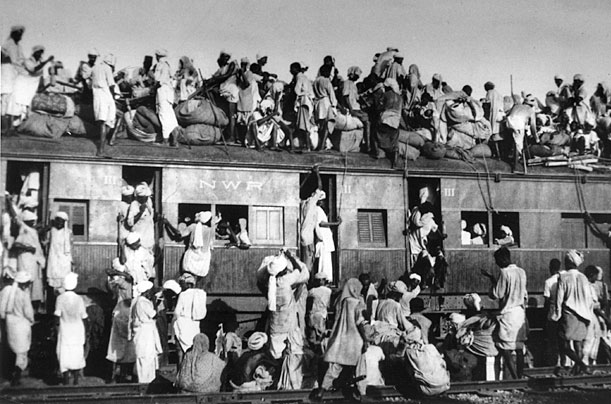interviews
A Seven Year, 9,000-Mile Journey Along India’s Contested Land Borders
Suchitra Vijayan’s "Midnight’s Borders" follows the lives of people in the borderlands facing displacement and state-sanctioned violence

Suchitra Vijayan’s debut book, Midnight’s Borders, is a genre-bending book of nonfiction—made of stories, encounters, vignettes, and photographs—about home, belonging, and displacement. The book recounts the author’s recent journey across India’s land borders covering 9000 miles over a span of seven years.
In addition to being a writer, Vijayan is an award-winning photographer and a barrister by training who has worked for the United Nations war crimes tribunals in Yugoslavia and Rwanda, and co-founded the Resettlement Legal Aid Project in Cairo which provides legal aid to Iraqi refugees.
Even if Vijayan’s debut book centers South Asia, its focus on borderlands as sites of state-sanctioned violence mirror a rising nationalism and consolidation of borders across our increasingly globalized world. As the author says in her book:
“…borders around the world are enclosing and suffocating their people rather than guaranteeing their freedom. What happened in Bosnia was a repeated in Rwanda, and what happens in Palestine is happening in Kashmir.”
The stories within her book hold immense pain, yet they are of a global urgency because they herald a new world order.
Namrata Poddar: What first drew me to Midnight’s Borders was the book’s title, its reference to ideas of home, displacement, nationalism and transnationalism. Also, the title is an obvious nod to Salman Rushdie’s canonical book of postcolonial fiction, Midnight’s Children, that talks about the making of India as a nation space and the Partition as the subcontinent’s painful, colonial inheritance. What was your reasoning behind the book’s title?
Suchitra Vijayan: When we decided on this name I was very aware of the comparisons to Rushdie’s magnum opus—a book that continues to cast a long shadow, especially if you are an author from the subcontinent. Rushdie’s Midnight’s Children is older than me; the book not only created a new kind of writing, it changed forever the way publishing will encounter South Asians, especially Indians writing in English. “To understand me,” says Rushdie’s Saleem Sinai, “you’ll have to swallow a world.” I think this is true of all the people who appear in the book.
Having said that this is not a literary ode to Rushdie. The years after 9/11 firmly changed that. The Rushdie I loved and cherished is gone. Not just him, so many men and women I respected as literary and ethical figures became willing and eloquent voices of the empire. For instance, a few months after 9/11 he wrote, “America did, in Afghanistan, what had to be done and did it well.” That essay hasn’t aged well.
It is like Nabokov’s lament: “My Gods died young.” Rushdie’s support for the war in Afghanistan and Iraq, and his refusal to confront the tyranny of the American Empire now puts us in very different political spaces.
There is a clear distinction between speaking against the powerful and claiming to speak on behalf of the ‘voiceless.’
Jawaharlal Nehru India’s first Prime Minister’s speech “Tryst with Destiny” was delivered to the Indian Constituent Assembly in the Parliament, on the eve of India’s Independence shortly before midnight. “At the stroke of the midnight hour, when the world sleeps, India will awake to life and freedom.” While Nehru was still declaring this victory, the slaughter began. Not everyone rejoiced in these new freedoms. Not everyone lived to see its broken promises. 17.8 million people lost their homes in the aftermath of the Partition of the subcontinent, and what consequently became the world’s greatest migration. In the book, I say we were ambushed halfway to freedom. That question of lost freedom and possibilities still haunts us.
Nehru’s speech ends with, “There is no resting for any one of us till we redeem our pledge in full, till we make all the people of India what destiny intended them to be.” The pledge however was never redeemed. More importantly, as Babasaheb would argue, the political revolution was never accompanied by a social revolution. He writes about how when the Constitution was adopted, “We are going to enter into a life of contradictions. In politics, we will have equality, and in social and economic life, we will have inequality. … How long shall we continue to live this life of contradictions?”
So here, “Midnight” functions as a moment of violent birth, but also perhaps the foundational violence that becomes codified in various ways, especially in the bodies of people farthest away from power.
NP: 150 million people, or almost half of the USA’s population, live in 111 border districts along India’s borderlands and many don’t have any ID cards to prove their citizenship, your book tells us. I imagine these numbers make India the largest “democracy” that’s increasingly manufacturing foreigners out of its citizens, although as you well remind us, this colonial inheritance of border-making, state surveillance and violence is a global phenomenon.
As an Indian American reading your book, I kept thinking of Trump’s administration, the ICE, detention centers, caged children, and all that’s been happening at the US-Mexico borders for a while now. Given your extensive work in international war crime zones, what drove your narrative decision to leave sustained comparisons of India’s borderlands with other parts of the world? Especially with your current home, the United States, that’s known as one of the biggest military powers of the world.
The idea of ‘bearing witness’ is very problematic. With the phone armed with a camera, everyone is a photographer; we are all witnesses.
SV: The global border regimes are inexplicably connected. For instance, the devastating story of the six-year-old Sikh girl, Gurpreet Kaur, who died in the Arizona desert in 2019 tells a story of another wave of refugees and others leaving South Asia, particularly India, and traveling to South America and making the dangerous journey to the US southern border.
There are also other threads that connect migration, and refugee flows globally. I realized early on that the material I had on the American borderlands needed more time and work. American borderlands don’t begin or end with the Southern border; its tentacles and walls span the globe. I also felt that the story, the history, and genealogy needed to be told through a different lens, the lens of carceral history, slavery, and Jim Crow that connects Attica prison riots to Abu Ghraib.
NP: In the second half of the book, your narrator shares with the reader what prompted her lifelong interest in questions of state violence and justice. She shares an incident from her childhood where her father is brutally attacked within her home city, Madras (now Chennai), and nearly killed by what’s rumored to be state-sanctioned violence. Later on, the twelve members of a gang who assaulted him are acquitted by the Madras high court.
On one hand, I loved your book where the narrator disappears to center stories of people living in Indian borderlands—forgotten subjects of both Indian and global history. On the other hand, the reader in me kept wanting to experience more intimacy with the narrator, to experience more moments like the one where your narrator shares about her father, and connects it to the people and stories within the book. Why was decentering the narrator and her interiority within the book important to you?
SV: The choice of decentering the narrator happened in multiple ways. The first is political. When there is a right-wing authoritarian regime ruling India, as a writer I had an ethical responsibility to respond to the present. What moral and political stands should we as writers take in the face of ongoing oppression? That clarity led to specific form and narrative choices.
In both popular and literary culture in the West the subject—the self is almost always the center. I think there is a reason why we lived through the kind profoundly vacuous personal essay culture that flourished in the last decade and in some ways has returned with a vengeance through other means. It is the capacity to write about the self and reduce everything, even the zeitgeist of our times to a cameo.
One of the things I was told often by editors and agents who I pitched this book to was that I needed to put more of myself in the book. That suggestion, no matter how well-meaning, always made me deeply uncomfortable. As I traveled, I was very aware of these inherent power differences. I came with my privileges, also let’s not forget, prejudices. I write in the book:
“It is not my goal to ‘bear witness’ or ‘give voice to the voiceless.’ Such writings have long been implicated in the history of colonial ethnographic practices, where native informants are poised to become the voices of the empire. The people in this book are eloquent advocates of their history and their struggles. My role, then, and this book’s role, is to find in their articulations a critique of the nation-state, its violence, and the arbitrariness of territorial sovereignty.”
For instance, writing about my father happened only in the final round of edits just before we locked the edits on the manuscript. My editor, Ryan, specifically asked why this work and this book are so important to me. He flagged this in the Kashmir chapter. Even as I wrote about this, I wanted to be very clear that what I witnessed, or the violence inflicted on my father, are not the same as what over eight million Kashmiris have endured. It’s not comparable, and should not be compared. While that incident had a profound impact on me, my politics, how I think about violence, its relationship to justice, or the lack of it, this is not the same kind of violence Kashmiris have been subjugated to. I have never lived under military occupation, curfew, or a looming threat of violence. Check posts or bunkers were not part of the landscapes of my home. Finally, there is a clear distinction between speaking against the powerful and claiming to speak on behalf of the “voiceless.” The former is an essential act of dissent, even resistance, especially in these dark times. The latter is an act of violence against people whose voice you are appropriating.
NP: In another poignant moment within the book, when you’re traveling the India-Bangladesh border zone, you witness two young children playing with a kite and a little girl plucking wildflowers within a site that’s notorious for state violence against India’s Muslim minorities. You reach for your camera then refrain from taking a photograph of the children for your book, “an archive of violence.” Why was putting away the camera here important to you as a writer?
SV: Our visual and political culture regularly elevates the storyteller above the stories. The idea of “bearing witness” is very problematic as a concept, as a rhetorical tool, and as a literary device. With the phone armed with a camera, everyone is a photographer; we are all witnesses. We live in a surveillance economy where we are constantly just bearing witness—we are record keepers, unwitting spies, and voyeurs. This means that the capacity to see does not automatically become the capacity to act. Or even a road map to justice.
Representing people on film, photographs or paper is a political act. We need better, more thoughtful responses to the question: what is the function of seeing and documenting? I’m not just talking about the ethics of documenting, but also the limits of stories and images, and their place in our social worlds. As I wrote this book, it became very clear that I wanted to use photographs for a very specific purpose.
This past year, Magnum came under fire and was forced to re-examine its archive after accusations that it held and made available photographs that showed the sexual exploitation of minors. Some important conversations and critique emerged around the function of an archive that holds images of violence and exploitation.
In March this year, the court ruled that Harvard University can hold on to the daguerreotypes depicting enslaved Africans, despite objections from the subject’s descendant, Tamara Lanier. The judge ruled that the “photos belonged to the photographer, not the subjects.” The lawsuit made important arguments about the image, archive and who these images belong to, and who has the moral right to the image shot without “without consent, dignity, or compensation.”
NP: Speaking of power and representation, I was deeply disturbed yet unsurprised when you share stories of poor teenage men who join the South Asian army across its borderlands and learn to kill with impunity because a gun in the hand predominantly means an escape from hunger. This story is so different from the narrative of toxic masculinity we often associate with the military (and rightly so?), a legacy hypervisible in Hollywood and Bollywood too, both within and beyond war movies. Were there any other moments while traveling through India’s borders that enlarged your perception of masculinity within the military?
If we are to survive as a people and as a community, we need to radically reimagine our world, a world where we center human dignity and freedom as the cornerstone.
SV: Absolutely. The military-security-media complex in India grew rapidly in the years following the Kargil war. We also saw civil-military relations change. During the same time, we saw movies and series that construct a new kind of hyper-masculine soldier who is essential to guarding freedom and homeland security. As India became increasingly militarized, it also had to manufacture perennial existential threats. But in reality, the Indian army, like society, is not free of caste, class, or the cruelties it produces. You definitely see toxic masculinity play out with the officer cadres. One story I heard repeated over and over again was stories of suicide. As per official data, in 2018, a total of 173 BSF guards had committed suicide over the period of 5 years.
Second, even while these men join the army for many different reasons, ideas of militarized masculinity definitely structure their social worlds. They are products of a deeply unequal society.
NP: I loved how your highly dystopian narrative ends on a note of hope, on the recent student-led protests across India that are resisting Modi administration’s obvious agenda of promoting Hindu supremacy within the country’s multiethnic, multi-religious reality. It’s a moment, your narrator suggests, that heralds a borderless world, one we must all co-create for our children. Can you share more about your vision of a new world, free of borders? What does freedom in this context look like to you?
SV: This is the age of erosion of citizenship rights, a kind of ongoing attrition against human rights, civil liberties, and in the case of India, an accelerated dilution of fundamental rights. It’s a dangerous moment where the figure of the rights-bearing citizen is being reduced to a consuming subject. The new world we must fight for is not a utopian one, instead if we are to survive as a people and as a community, we need to radically reimagine our world, a world where we center human dignity and freedom as the cornerstone.
Second, freedom and dignity cannot be tied to a state. What I mean by that is, the state should not be the final arbiter of what rights you and I possess. Certain rights are inalienable and exist because we are human. Without that struggle, what awaits us is a world emptied of citizenship rights.
Finally, I want to end the note of gratitude to the women of Shaheen Bagh and the hundreds of thousands of students who took to the streets in the aftermath of the citizenship laws in India. It was a remarkable moment that taught me what an act of community can do in the face of state repression.
It’s our duty to remember, fight and never give up.









